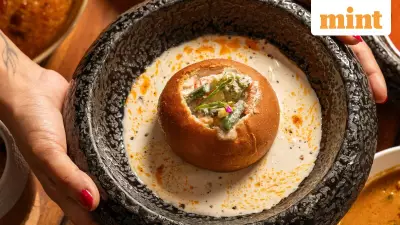
In Japan, a simple bow speaks volumes. From the gentle nod of a shopkeeper to the deep, formal bend of a corporate executive, the act of bowing—known as ojigi—is a silent language of respect, humility, and social grace. For an Indian audience familiar with the respectful 'namaste,' the Japanese bow presents a fascinating parallel, a non-verbal communication deeply woven into the fabric of society.
The Historical Roots of Japanese Bowing
The tradition of bowing in Japan is not a recent phenomenon; its origins stretch back more than a thousand years. The practice was initially observed within Buddhist monasteries, where monks would bow before statues of Buddha as an act of devotion and reverence. This spiritual foundation was later reinforced by the arrival of Confucian ideals from China, which emphasized social hierarchy and respect for elders and superiors.
The custom truly became institutionalized during the samurai era (12th–19th century). For the warrior class, bowing was a critical component of etiquette. Samurai would bow deeply before engaging in battle, a gesture showing respect for their opponent. Lower-ranking samurai also bowed to their lords as a clear mark of loyalty and submission. Over centuries, this practice trickled down from the elite to become an essential part of everyday life for common people, solidifying its place as a cornerstone of Japanese culture.
The Different Types of Japanese Bows
Not all bows are created equal. In Japan, the angle, duration, and context of a bow convey specific meanings. Here is a breakdown of the main types of ojigi you will encounter.
Eshaku (会釈): The Casual Bow
This is a light, informal bow of about 15 degrees. It is a quick, polite acknowledgment used in everyday situations. You might offer an eshaku when passing a colleague in the hallway or when a shop attendant greets you. It's the equivalent of a friendly, respectful nod.
Keirei (敬礼): The Formal Bow
Used in professional and formal settings, the keirei is a more pronounced bow of 30 degrees, typically held for a couple of seconds. This bow demonstrates a higher level of respect and is commonly used in business meetings, when greeting clients, or when thanking someone sincerely.
Saikeirei (最敬礼): The Deepest Respect
Reserved for the most solemn occasions, the saikeirei is a profound bow of 45 to 90 degrees. This gesture is used to express the deepest apologies, the most sincere gratitude, or when addressing someone of very high status. It is the bow you see when a public figure is making a heartfelt apology on national television.
Dogeza (土下座) and Zarei (座礼): Traditional Bows
Two other significant bows are Dogeza and Zarei. Dogeza is an extreme bow of submission or apology where one kneels on the ground and places their forehead on the floor. Historically, it was a plea for mercy. Zarei is a formal bow performed while kneeling in the traditional seiza position, commonly seen in tea ceremonies, martial arts dojos, and other traditional rituals.
Why Bowing Still Matters in Modern Japan
Despite Japan's rapid modernization, bowing remains a vital part of social etiquette. It is a non-verbal cue that maintains harmony and order, clearly defining social and professional relationships. While the frequency of bowing has relaxed in very casual settings among friends, it is still expected and respected in virtually all public and professional interactions.
For visitors to Japan, understanding the basics of ojigi can greatly enhance cross-cultural communication. A small, conscious effort to bow appropriately is seen as a sign of respect for Japanese customs and traditions. It is a powerful, wordless gesture that, much like India's namaste, bridges the gap between individuals through a shared language of respect.





